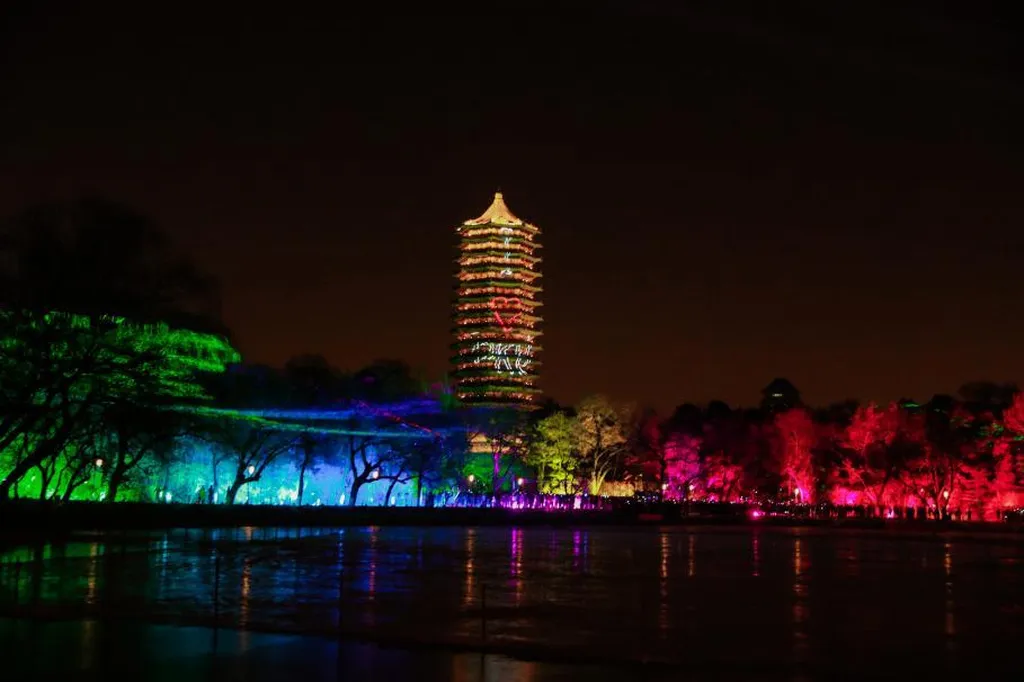In a fresh study that’s got maritime professionals talking, researchers have turned to nighttime lights to track the growth and development of key port cities along the Belt and Road Initiative (BRI). The study, led by Ronglei Yang from the School of Government at Peking University, uses satellite data to shed light on how these cities have evolved over the past decade. Published in the journal ‘Mathematics’ (which, yes, is in English), the research offers some intriguing insights into the spatiotemporal development patterns of these crucial hubs.
So, what’s the big deal? Well, the BRI has been a game-changer in global trade and infrastructure, and port cities are the beating heart of this initiative. But quantifying their development has been a challenge, especially in emerging economies where data can be scarce. That’s where nighttime light (NTL) data comes in. By analyzing data from the VIIRS satellite between 2013 and 2023, Yang and his team have been able to paint a picture of urbanization trends in twelve BRI port cities across Asia, Africa, Europe, and South America.
The study makes three key contributions. First, it compiles a harmonized NTL record for these cities, providing a consistent dataset for analysis. Second, it combines Standard Deviational Ellipse (SDE) parameters with rank-size dynamics to diagnose urban hierarchy. Third, it validates these findings with external indicators like GDP, population, and port throughput.
One of the standout findings is the pronounced NTL growth in Asian ports, with Singapore approaching saturation. As Yang puts it, “This is consistent with the luminosity-ceiling hypothesis, where cities reach a point where light intensity plateaus despite continued economic growth.” This could have significant implications for urban planning and infrastructure development in these areas.
The SDE analysis also revealed varied expansion patterns, shaped by both geophysical and policy factors. This suggests that a one-size-fits-all approach to development might not be the best way forward. Instead, tailored strategies that consider local conditions could be more effective.
Perhaps most notably, the study found that rank-size trends indicate decentralization during the BRI decade, with the primate-city model being challenged. This could point to a shift in the urban hierarchy, with smaller cities gaining more prominence. As Yang explains, “This decentralization trend could open up new opportunities for investment and development in these secondary cities.”
So, what does this mean for the maritime sector? Well, for starters, it highlights the need for polycentric infrastructure investment. Rather than focusing solely on the largest ports, there’s a case to be made for developing smaller, emerging hubs as well. This could help distribute the benefits of the BRI more evenly and create new opportunities for maritime businesses.
The study also underscores the importance of institutionalized NTL monitoring. As Yang notes, “Regular monitoring of NTL data can provide valuable insights into urban development trends and help policymakers make informed decisions.” This could be a valuable tool for maritime professionals looking to stay ahead of the curve.
Finally, the research calls for green port certification aligned with sustainability goals. With environmental concerns becoming increasingly important, this could be a significant opportunity for ports to enhance their reputation and attract eco-conscious businesses.
In conclusion, this study offers a fascinating glimpse into the development patterns of BRI port cities. By leveraging NTL data, it provides valuable insights that could shape the future of maritime infrastructure and investment. As the BRI continues to evolve, these findings will be crucial for maritime professionals looking to navigate the changing landscape.

